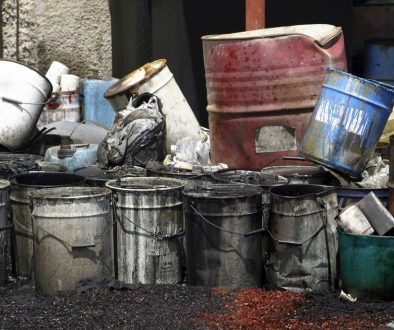The menace of asbestos, a naturally occurring mineral once lauded for its heat resistance, flexibility, and insulating properties, is a grave concern in the modern world. With its potential to cause serious health issues like lung cancer and mesothelioma, the safe disposal of asbestos has become a critical task for industries and homeowners alike. This guide serves as an invaluable resource in delineating the necessary measures for secure and responsible asbestos disposal.
By deep-diving into the legal implications, health hazards, identification techniques, and appropriate disposal procedures, the guide aims to arm its readers with comprehensive knowledge about asbestos management. It underscores the importance of expert involvement and the risks of inadvertent exposure, reinforcing the need for meticulous handling.
In an era where health and wellness have taken centre stage, the significance of such a resource cannot be overstated. Knowledge is power, and in this case, it might well be the barrier between life and death.
Understanding the Danger: How to Dispose of Asbestos Safely
- Identifying and Assessing Asbestos-Containing Materials (ACMs)
The first step in managing asbestos disposal is to identify and assess the presence of ACMs on the construction site or in the building. Key actions to take include:
- Inspections: Conduct thorough inspections of the premises or construction site to locate potential ACMs, focusing on areas where asbestos was commonly used, such as roofing, insulation, floor tiles, and pipe lagging.
- Professional Assessmesive assessment and accurately identify the presence, type, and cnt: Engage a qualified asbestos surveyor to perform a comprehenondition of ACMs, minimising the risk of exposure.
- Record-keeping: Maintain detailed records, including an asbestos register, to track any identified ACMs and their condition, ensuring effective monitoring and management throughout the project duration.
- Safe Asbestos Removal Procedures
Once ACMs have been identified, it is essential to ensure their safe removal by following proper procedures, which include:
- Engaging Trained Professionals: Work with licensed asbestos abatement professionals who have the required skills, equipment, and training to remove and handle ACMs safely.
- Implementing Control Measures: During asbestos removal, implement safety precautions such as sealing off the work area, using protective gear, and employing specialised asbestos waste bags or containers to contain and transport removed ACMs.
- Monitoring Air Quality: Monitor the air quality within proximity to the asbestos removal site, employing negative air pressure containment to prevent airborne asbestos fibres from spreading.
- Segregation, Transportation, and Disposal of Asbestos Waste
Proper segregation, transportation, and disposal of asbestos waste are crucial for responsible asbestos management:
- Waste Segregation: Ensure that asbestos waste is separated from other waste materials to avoid cross-contamination and facilitate appropriate disposal.
- Waste Containers: Utilise specialised asbestos waste bags or containers, clearly labelled with appropriate hazard warnings to securely store and transport asbestos waste.
- Licensed Transporters: Partner with licensed waste transporters and disposal facilities, like Enviro Skip Hire, to ensure compliance with regulations and guarantee the safe and responsible management of asbestos waste.
- Collaborating with Licensed Waste Management Providers
Working with a licensed waste management provider like Enviro Skip Hire offers numerous benefits when it comes to responsible asbestos disposal:
- Regulatory Compliance: Licensed asbestos waste disposal companies ensure full compliance with legal requirements and guidelines, mitigating the risk of fines or prosecution related to improper asbestos handling.
- Environmental Responsibility: Partnering with a professional waste management service provider helps guarantee the safe and responsible treatment or disposal of asbestos waste, reducing environmental impact and potential harm to human health.
- Expert Advice and Support: Experienced professionals from a licensed waste management service can offer valuable guidance and support in navigating the complexities of asbestos disposal procedures, ensuring a competent and secure handling process.
Precautions and Guidelines for Safe Asbestos Disposal
Proper adherence to precautions and guidelines is crucial to ensuring a safe and responsible asbestos disposal process:
- Asbestos Handling Licences: Confirm that any professionals or companies engaged in asbestos removal and disposal possess the requisite licences to perform such tasks legally and safely.
- Waste Disposal Documentation: Acquire a consignment note and waste carrier licence from your chosen waste management provider – both required documentation when disposing of asbestos waste in the UK.
- Safe Work Practices: Follow the Control of Substances Hazardous to Health (COSHH) Regulations 2002 and the Health and Safety Executive’s (HSE) Approved Codes of Practice (ACOP) for safe and compliant asbestos handling and disposal.
The Role of Professionals in Safe and Responsible Asbestos Disposal
The hazardous nature of asbestos necessitates special attention and diligence in its management and disposal during building and construction activities. By identifying and assessing ACMs present in a project, engaging trained professionals for safe removal, and partnering with a licensed waste management service provider and skip hire in Hanley, like Enviro Skip Hire, effective and responsible asbestos disposal can be achieved.
Following the precautions and guidelines outlined in this blog post, along with adhering to legal requirements and environmental best practices, will help to protect workers, the public, and the environment from the dangers posed by asbestos. Through informed, responsible actions and collaboration with expert service providers, construction professionals can contribute to a safer, greener, and more sustainable industry.




